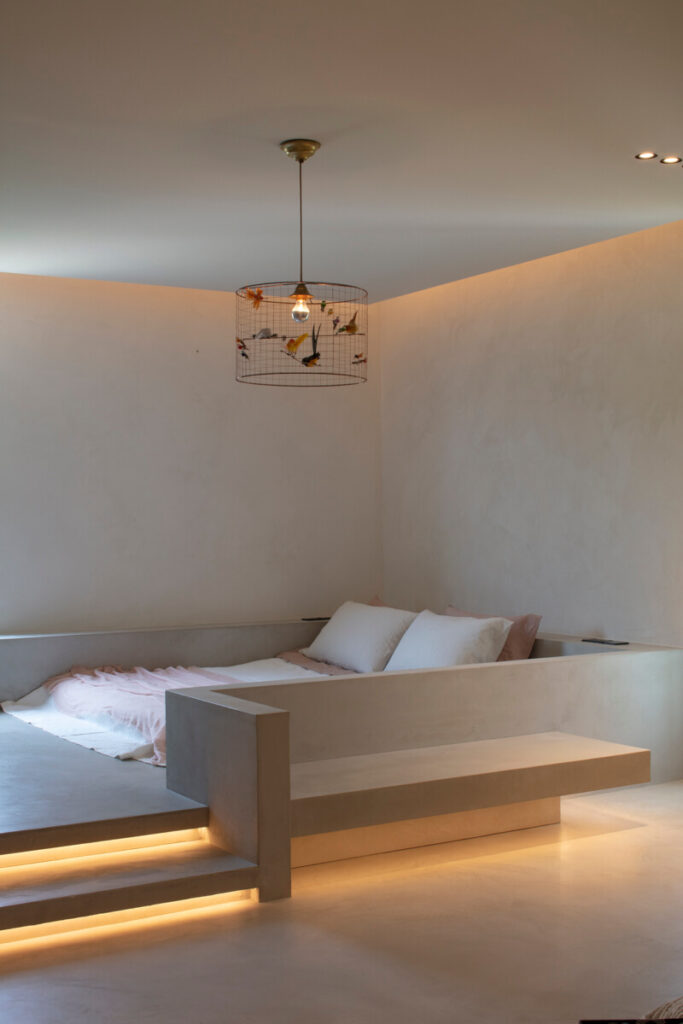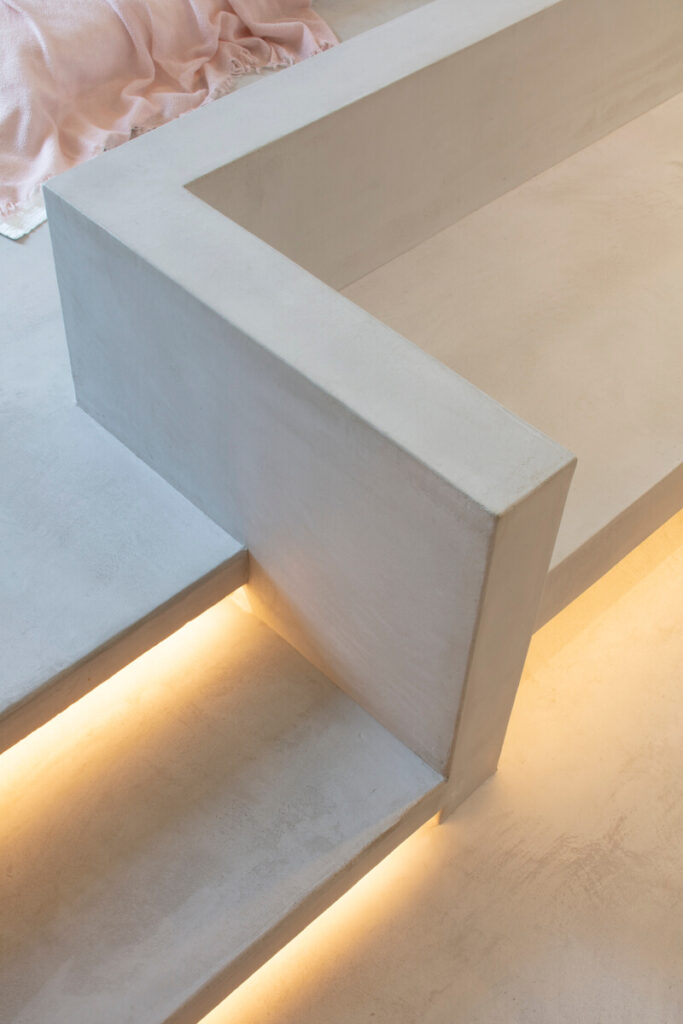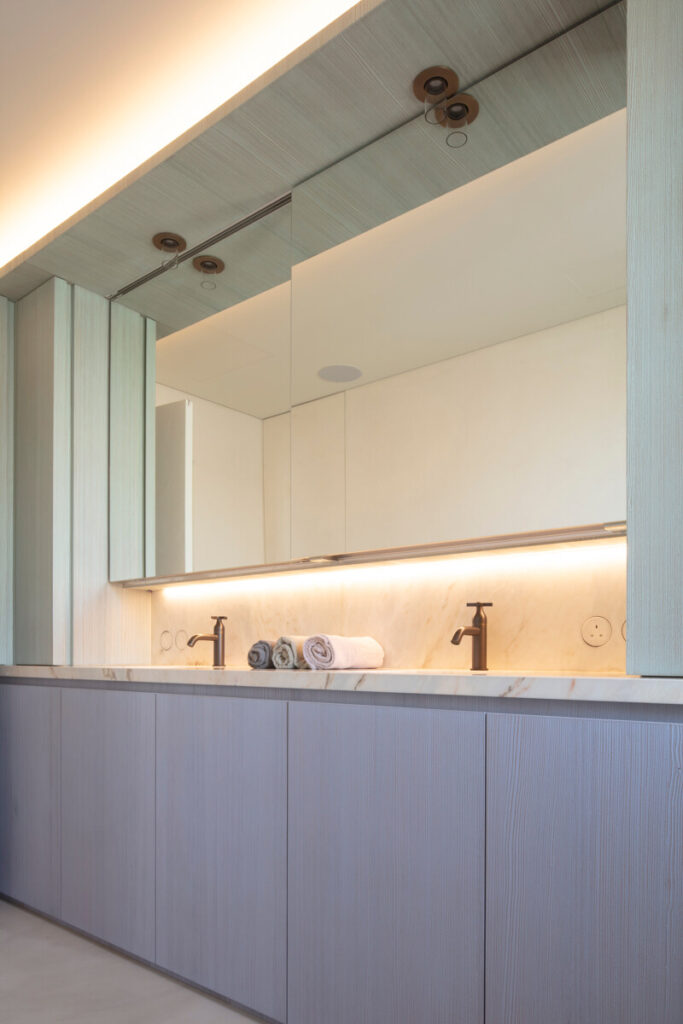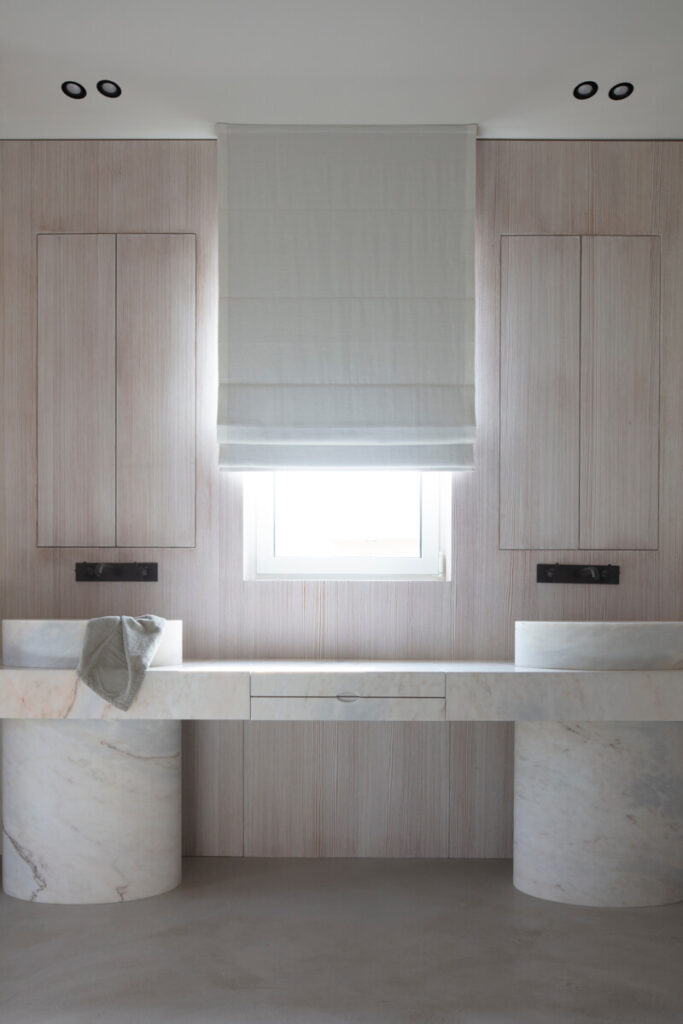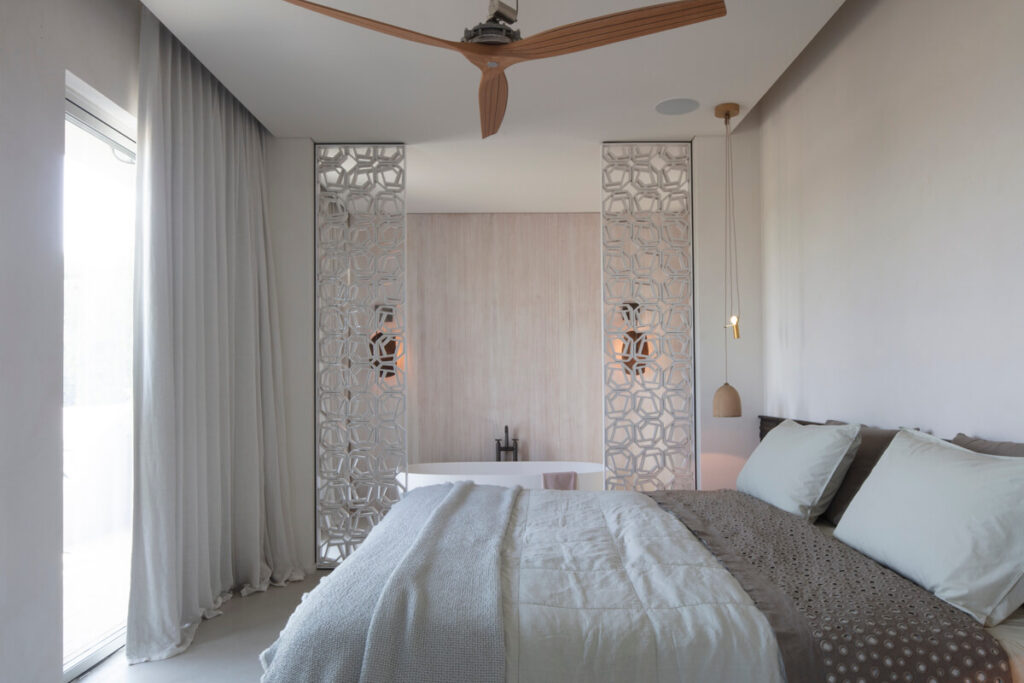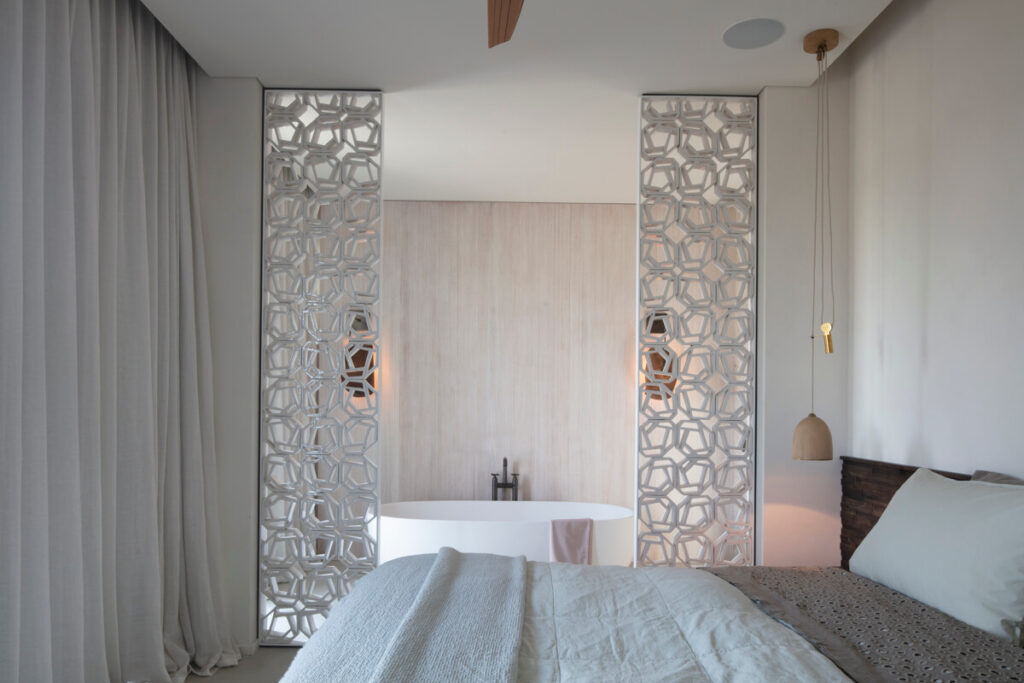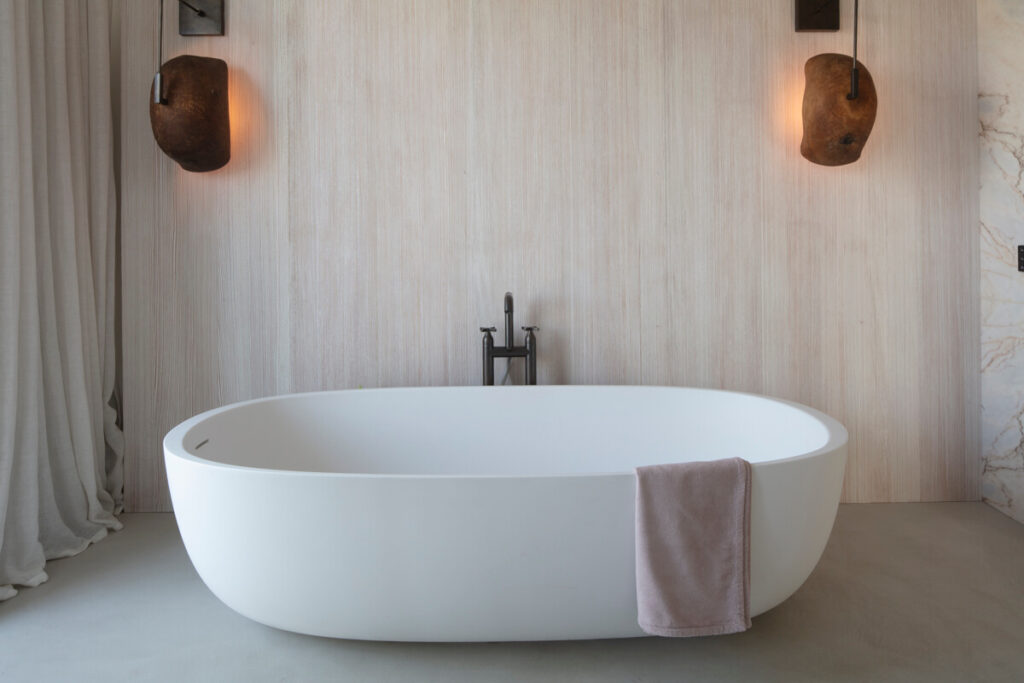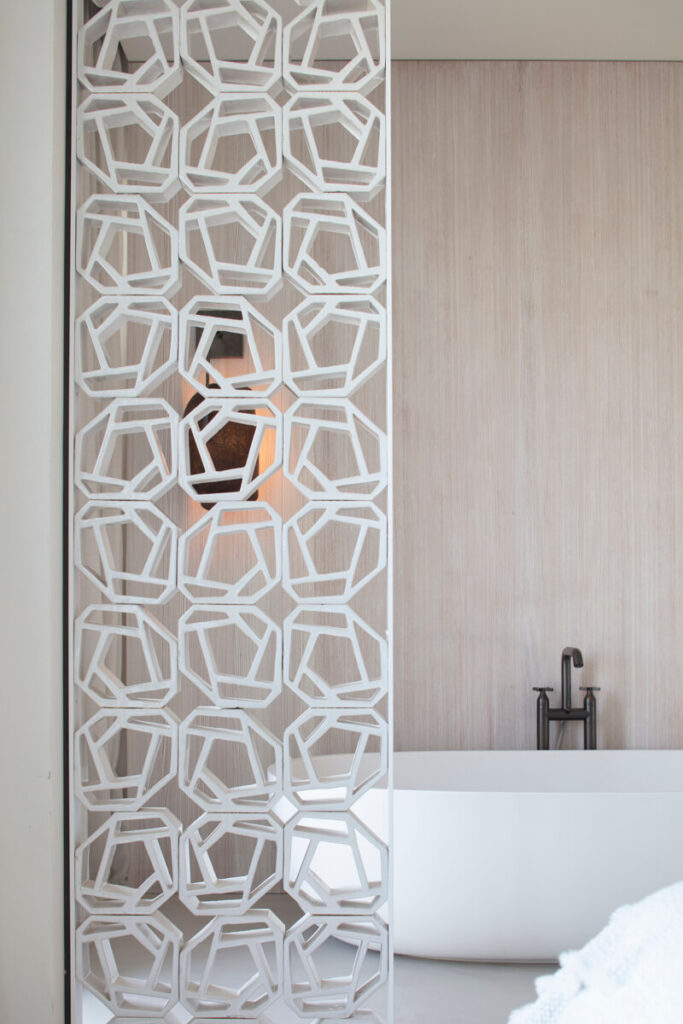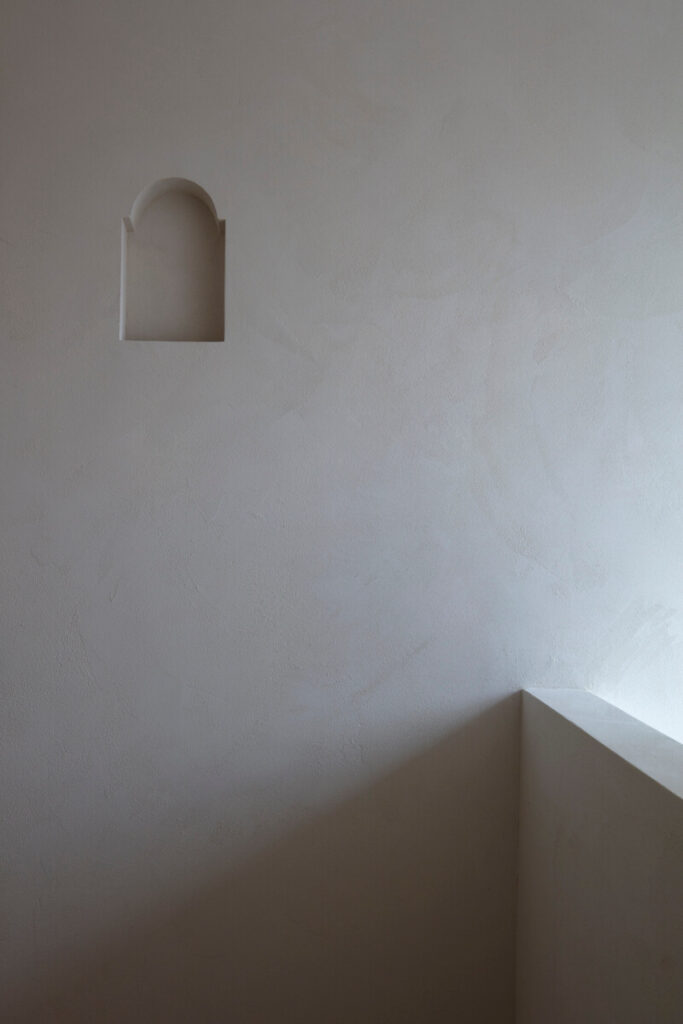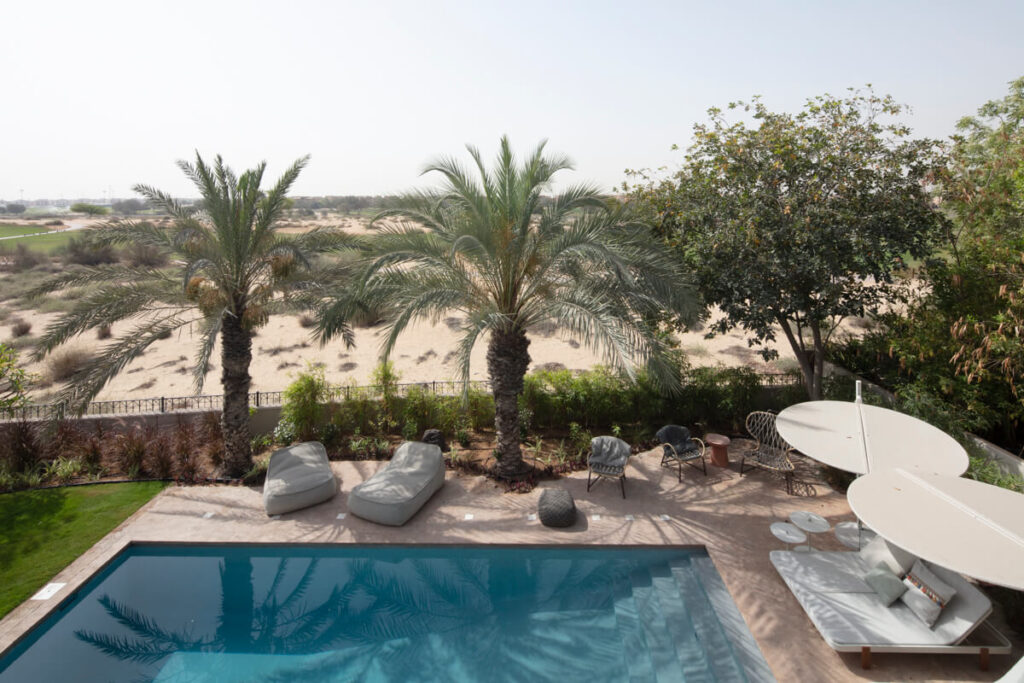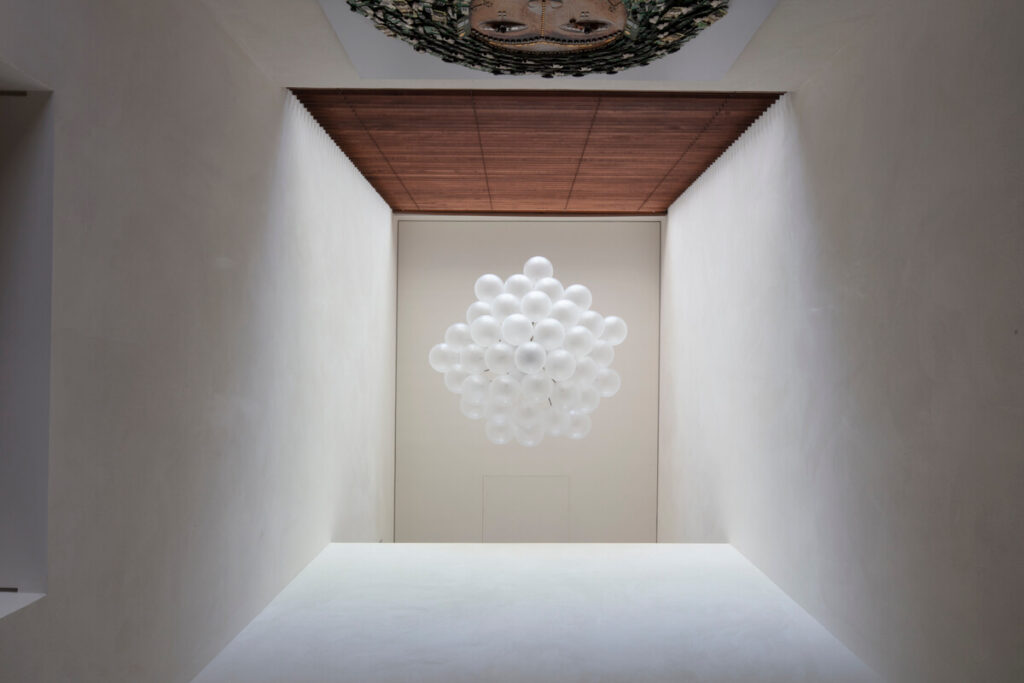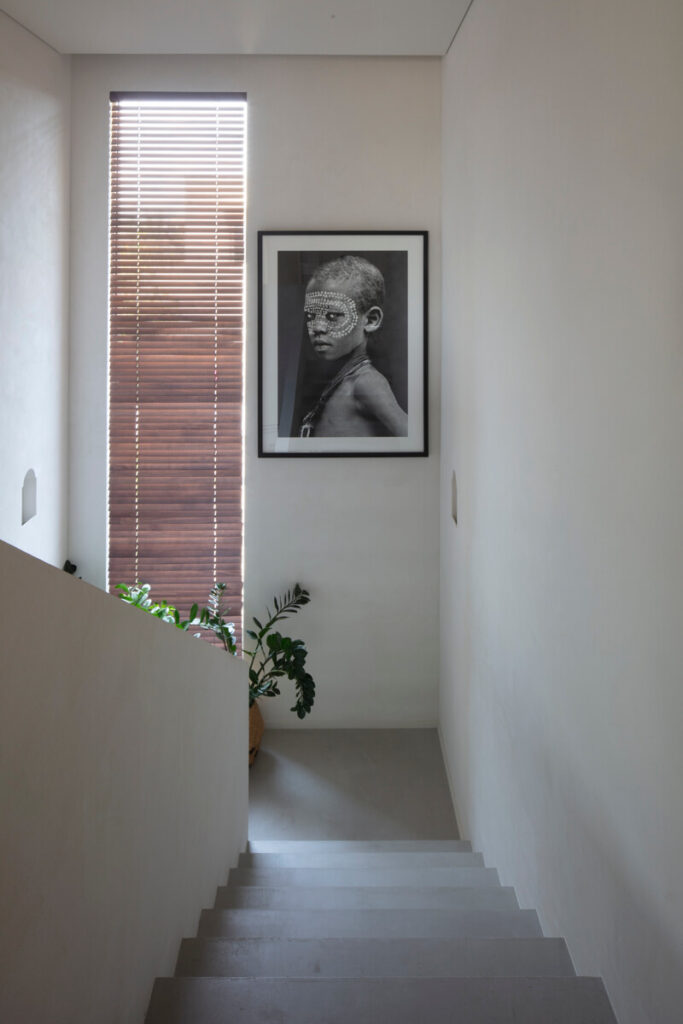Bye bye bling bling
A while ago, a regular client asked us whether we’d be interested in helping them create their dream home in Dubai. A Belgian couple and their two children were planning to move there for good, but first they wanted to transform their artificial, bling-bling living space into a warm, authentic family home. We were definitely interested, but we also knew there would be no shortage of challenges ahead. Tijl Matthijs and interior designer Dries De Malsche pick out the four main ones.
People
“When you embark on such a complex project, it’s important to know who you’re dealing with. So the fact that we’d already worked with the owners was definitely an advantage,” explains interior designer Dries De Malsche. “That’s right,” adds Tijl Matthijs. “We gave their home in Belgium a complete makeover a few years ago. They then set up a business in Dubai and moved there temporarily, but eventually decided to settle there permanently.”
Climate
“Temperature and climate always have an impact on our work, but in a country with a desert climate with warm, dry winters and even warmer and drier summers, these factors become much more important,” says Tijl. “Here in Belgium, for example, we often use white for interiors, but in Dubai that’s out of the question. The sunlight is simply too bright. If you paint walls white and give them a smooth finish, the glare is really bad for your eyes and gives you a headache.”
Culture
Dries De Malsche: “Dubai is quite a new country and attracts people from all over the world. That creates a special dynamic. However, interiors often tend to be artificial – or fake to use the current buzzword (laughs). Everything has to be shiny – they love bling-bling over there – and look brand-new. But that’s exactly what we Belgians don’t like. We crave authenticity, warmth and a nice feeling of being at home. We also have a completely different approach to projects like this. Qualities like craftsmanship, tradition, detailing and carefully considered choice of materials are so valued in Europe, but are totally foreign to local contractors.”
Logistics and administration
Dries and Tijl agree that the biggest challenge in a project like this is probably logistics. “Paperwork, work permits, planning, customs clearance, telephones, Skype meetings, and so on – there’s a lot to organise,” adds Dries. In the end, they both feel the same way: “We did it! We’re really proud of what we achieved: we met the agreed deadlines and the owners are delighted with how it all turned out.”
Photos
© Tim Van de Velde
Do you like our work?
Contact us



